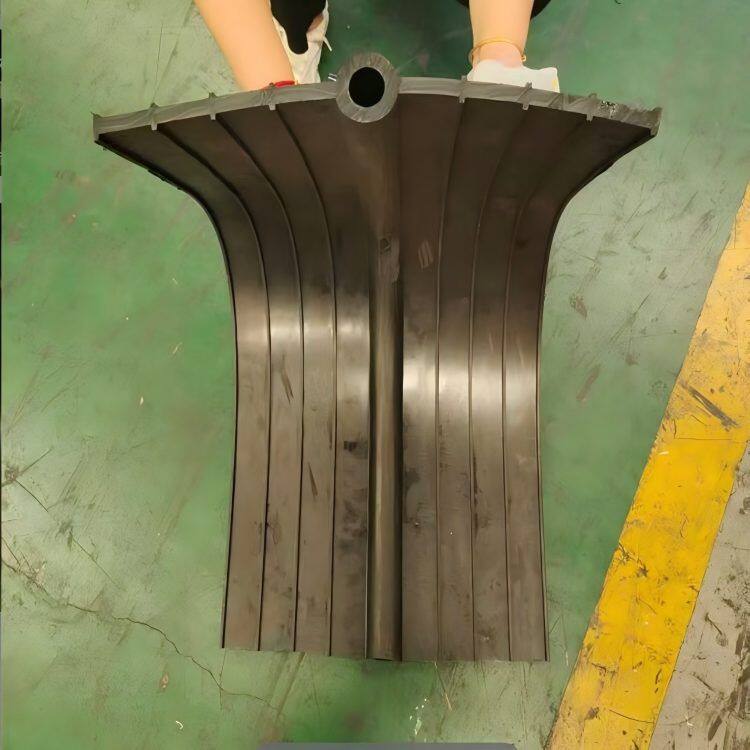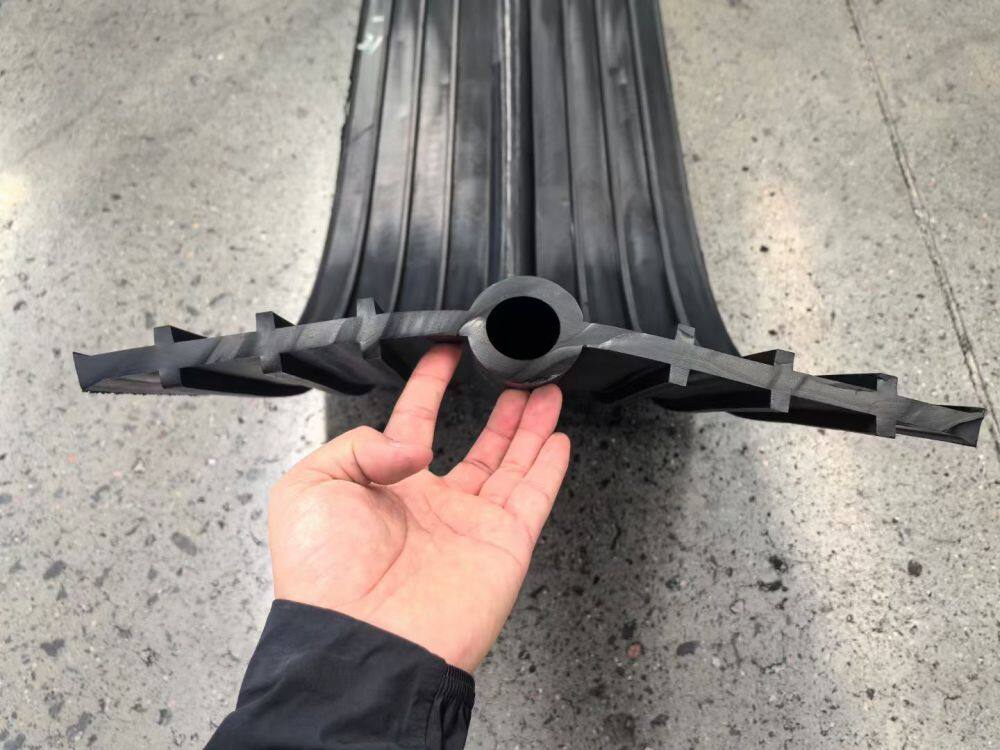-
 Wendy
Hi there! Welcome to my shop. Let me know if you have any questions.
Wendy
Hi there! Welcome to my shop. Let me know if you have any questions.
Your message has exceeded the limit.

What is the purpose of the 300*8mm center-embedded rubber waterstop?
2025-09-26 16:46:44
# Specific Applications of Center-Embedded Rubber Waterstops in Different Building Structures Relying on its core function of sealing concrete joints and blocking water penetration through the elastic deformation of rubber, center-embedded rubber waterstops are widely used in waterproofing projects for various building structures. The specific scenarios and functional details are as follows:
 ## I. Underground Building Structures Underground structures are long-term exposed to groundwater erosion, making joint waterproofing a top priority—and center-embedded rubber waterstops serve as core protective components here: - **Basements and underground garages**: They are mainly installed at construction joints (e.g., horizontal construction joints, vertical construction joints) and deformation joints of walls, floor slabs, and roof slabs. When the groundwater level is high, the waterstops prevent groundwater from seeping into the interior through the joints, avoiding wall dampness, floor water seepage, and water damage to vehicles in the garage, as well as decorations and equipment in the basement. For instance, in the construction joint between the raft foundation and shear wall of a high-rise building’s basement, the waterstop can adapt to the shrinkage deformation of concrete after pouring and maintain a tight seal continuously. - **Underground utility tunnels**: Used at circumferential joints and longitudinal joints of the main structure of the utility tunnel. The tunnel houses pipelines for electricity, communications, water supply, and drainage; water seepage inside may cause pipeline failures (such as short circuits in circuits and pipeline corrosion). The waterstops can resist groundwater and rainwater in the soil outside the tunnel, ensuring a dry internal environment of the tunnel and maintaining the normal operation of the pipelines.
## I. Underground Building Structures Underground structures are long-term exposed to groundwater erosion, making joint waterproofing a top priority—and center-embedded rubber waterstops serve as core protective components here: - **Basements and underground garages**: They are mainly installed at construction joints (e.g., horizontal construction joints, vertical construction joints) and deformation joints of walls, floor slabs, and roof slabs. When the groundwater level is high, the waterstops prevent groundwater from seeping into the interior through the joints, avoiding wall dampness, floor water seepage, and water damage to vehicles in the garage, as well as decorations and equipment in the basement. For instance, in the construction joint between the raft foundation and shear wall of a high-rise building’s basement, the waterstop can adapt to the shrinkage deformation of concrete after pouring and maintain a tight seal continuously. - **Underground utility tunnels**: Used at circumferential joints and longitudinal joints of the main structure of the utility tunnel. The tunnel houses pipelines for electricity, communications, water supply, and drainage; water seepage inside may cause pipeline failures (such as short circuits in circuits and pipeline corrosion). The waterstops can resist groundwater and rainwater in the soil outside the tunnel, ensuring a dry internal environment of the tunnel and maintaining the normal operation of the pipelines.
## II. Water Conservancy and Water-related Building Structures Such structures need to withstand high water pressure or long-term contact with water, so the waterstops must have both sealing performance and water pressure resistance: - **Water tanks (drinking water tanks, sewage treatment tanks)**: Installed at expansion joints and construction joints of the tank walls and tank bottoms. Water seepage in drinking water tanks will cause waste of water resources and may contaminate the surrounding soil; sewage in sewage treatment tanks contains corrosive substances, and seepage will not only pollute the environment but also corrode the tank structure. The waterstops can block the seepage of water (or sewage) through the joints; meanwhile, some corrosion-resistant rubber materials (such as neoprene) can resist sewage erosion and extend the service life of the water tanks. - **Dams and canals**: Arranged at the expansion joints of dam bodies, the connection joints between dam foundations and dam bodies, and the joints of canal bodies. Dams bear enormous water pressure, and the waterstops are required to prevent reservoir water from seeping through the joints to avoid seepage damage to the dam bodies; canals are used for water conveyance, and the waterstops can reduce water seepage loss during conveyance and ensure efficient water resource transportation.
## III. Transportation Infrastructure Structures Structures in transportation projects need to adapt to deformation caused by vehicle loads, temperature changes, etc., so the waterstops must have good deformation adaptability: - **Tunnels (highway tunnels, railway tunnels, subway tunnels)**: Primarily used at circumferential construction joints, longitudinal construction joints, and deformation joints of tunnel linings. Tunnels mostly pass through underground soil layers or rock formations and are prone to groundwater seepage. Seepage can lead to slippery tunnel floors (affecting driving safety), rusting of tracks (in subway/railway tunnels), and even damage to the lining structure. The waterstops can adapt to the deformation of tunnel linings caused by stratum pressure and temperature changes, maintain a tight seal at the joints continuously, and prevent groundwater from seeping in. - **Bridges**: Installed at the joints of bridge supports, the beam joints under bridge deck expansion joints, and the connection joints between bridge piers and cap beams. Bridges are exposed to the outdoors for a long time; if rainwater seeps through the joints, it will corrode the beam reinforcement and support components, affecting the load-bearing capacity and service life of the bridge. The waterstops can block rainwater seepage and, at the same time, adapt to the deformation of the bridge caused by vehicle loads and temperature changes (thermal expansion and contraction), ensuring the structural safety of the bridge.
## IV. Auxiliary Structures of Civil Buildings Although the water pressure on such structures is relatively low, water seepage will affect the living experience, and the waterstops play an auxiliary waterproof role: - **Balconies and terraces**: Set at the joints between balcony railings and balcony floors, and the construction joints where the terrace waterproof layer connects to the walls. Balconies and terraces are in long-term contact with rainwater; if the joints seep, it will cause water leakage from the ceiling downstairs and wall mildew, affecting the indoor living environment. The waterstops can enhance the sealing performance of the joints and form a double waterproof barrier together with the waterproof layer, reducing the risk of water seepage. - **Roof parapets**: Used at the joints between roof parapets and the roof waterproof layer, and the expansion joints of the parapets themselves. Water seepage in roof parapets will cause water seepage inside the roof, damaging the roof insulation layer and indoor decorations. The waterstops can block rainwater from seeping into the roof structure through the parapet joints.
Tags: center-embedded rubber waterstop, back-adhered rubber waterstop, installation of rubber waterstops

